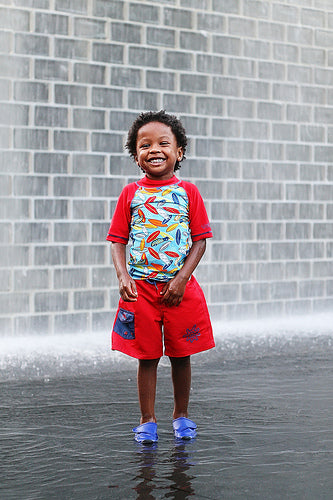Melanoma Prevention and Awareness For People of Color

February is the month that we create awareness about the hardships that this country was built on and celebrate the contributions that African-Americans have given to make the American culture unique. While we are learning about our history as Americans we need to keep in mind awareness for our health in terms of our heritage. Awareness about the dangers of skin cancer and melanoma are above all the most important because skin cancer rates have been on the rise among minority groups in the U.S.
Many people with darker skin tones believe that the pigmentation in their skin protects them from skin cancer. This is not true at all. Many people with darker skin tones think that because their skin doesn’t “burn” and only changes in pigmentation that they are free from the dangers of skin cancer and melanoma. That is false. The pigmentation cells do provide a natural SPF of 13 and even so, everyone should protect their skin with at least an SPF 15 broad spectrum sunscreen. The American Academy of Dermatology suggests an SPF 30 if you will be out in the sun for longer periods. According to Dermatologist, Dr. Charles E. Crutchfield, III, “Pigmentation doesn’t give you a free pass.”

Without a “free pass” people with darker skin should take the same precautions as their lighter skinned counterparts. There is a misconception about the dangers of skin cancer for people with darker skin tones and they are often diagnosed at later stages, which can be deadly. Another factor in the late diagnosis is that the skin cancer usually develops in unusual locations such as nasal passages, palms, soles of the feet, toenails, fingernails and mucous membranes around the mouth and genitals.
These forms of skin cancer are called acral lentiginous melanoma–the type of melanoma that took the life of reggae performer, Bob Marley. These types of skin cancers don’t always follow the rules of ABCDE.
So, what should you look for?
- Changes that may include brown or black colored stripes under the nail.
- A spot that extends beyond the edge of the nail.
- A mole or unusual spot on the palms of hands and feet that bleeds.
Most sun safety precautions are targeted towards lighter-skinned, blue-eyed people with freckles. Remember that skin color doesn’t matter. Everyone can get skin cancer. Here are some precautions that everyone can take into consideration the next time you step outside.
Simple Sun Safety Advice:
- Wear sunscreen! Use a broad spectrum sunscreen of at least an SPF 30 that protects against both UVA and UVB rays.
- Develop an awareness of the moles on your body and be alert for new or changing moles!
- Avoid the direct sunlight when the rays are the strongest between 10am-4pm.
- If you must be outdoors during those times–seek shade!
- Wear a wide-brimmed hat and sunglasses.
- Wear sun protective clothing like UV Skinz uv-protective wear!

“It doesn’t matter what color your skin is, everyone can get skin cancer.” ~Dr. Charles E. Crutchfield, III






